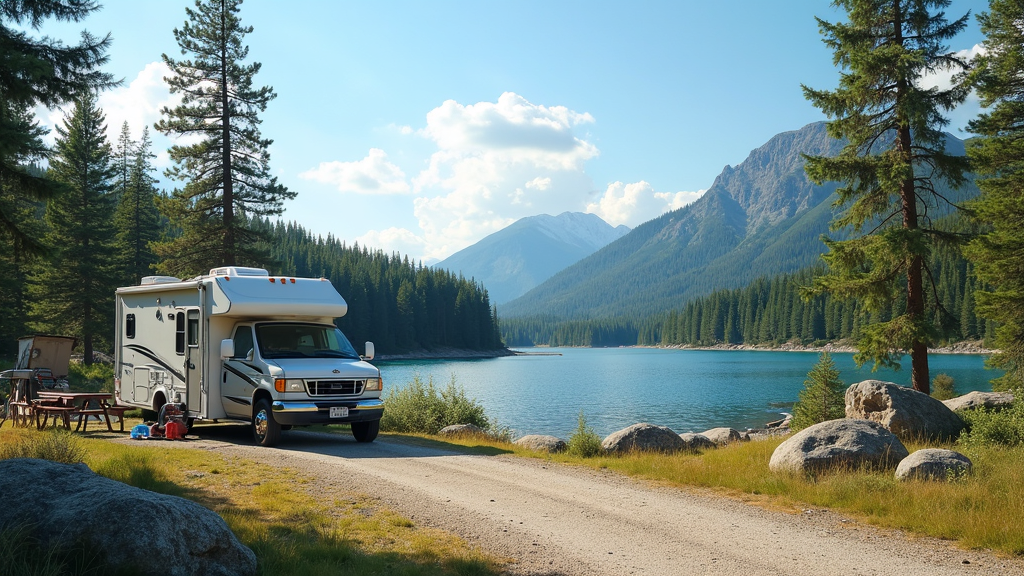Owning an RV opens the door to adventure and freedom, but keeping it running smoothly means a bit of ongoing TLC. I’ve picked up a bunch of tips over my years of RV travel, some learned the hard way, some passed down by seasoned road warriors. Staying on top of regular RV maintenance helps avoid breakdowns and keeps those road trips stress-free. Here’s a practical guide to RV maintenance that’s packed with everything I think is worth knowing, whether you’re parked lakeside for the weekend or roaming fulltime.

Why RV Maintenance Really Matters
Looking after your RV saves you money and headaches in the long run. It’s not just about keeping it looking good. Regular maintenance nips small problems in the bud before they become expensive repairs down the line. It also means your trips won’t get ruined by surprise breakdowns. I’ve personally seen water leaks turn cabinets into mush and poor tire care leave folks stranded miles from anywhere. Setting aside a little time each month to keep things in shape pays off road after road.
The average RV owner travels over 4,000 miles per year, according to the RV Industry Association. That’s a lot of bouncing, weather, and wear to handle. Unlike a regular car, your RV is a rolling home and needs attention to plumbing, electrical, and all sorts of moving parts. Regular checkups and basic know-how help make every trip more enjoyable and less stressful.
Getting Started with RV Maintenance
If you’re new to RV ownership, the world of maintenance can seem a bit overwhelming. There’s no need to know everything from day one, but knowing which areas need attention makes a big difference. Here’s a short primer to get you going:
- Water Systems: This includes plumbing, water heaters, and pumps. Keeping it clean and leakfree keeps mold and smells away.
- Roof and Seals: Roofs are notorious for letting water sneak in. Checking seals and roofs regularly helps keep things dry.
- Tires and Brakes: These are your direct link to the road. Checking pressure and tread before every big trip can save a lot of trouble.
- Electrical Systems: RVs run on both battery and shore power. Keeping everything working right is key for lights, heating, and entertainment.
- Exterior Upkeep: From cleaning, to checking slideouts and windows, these jobs keep your RV comfy and protected from the elements.
Each system plays a role in your comfort and safety. Focusing on these basics helps you cover the maintenance that matters most.
Quick Guide: RV Maintenance Checklist
Over time, I’ve put together a checklist that helps make sure nothing falls through the cracks. I print out a copy and keep it in the RV’s glove box for peace of mind. Here’s a quick version you can adapt to your rig:
- Inspect Roof and Seals: Check for cracks, lifts, or signs of water inside.
- Check Tire Pressure and Condition: Look for uneven wear or cracks in the sidewalls.
- Test Battery and Connections: Clean battery terminals and make sure everything’s holding a good charge.
- Flush Water System: Sanitize tanks and run fresh water through lines every few months or after storage.
- Examine Brakes: Listen for odd noises and watch for pulling when stopping.
- Run the Generator: Even if you don’t use it often, running it helps keep parts lubricated and ready.
- Check Lights: Make sure brake, signal, and interior lights are all working.
- Lubricate Moving Parts: Hinges, slideouts, and steps all need a bit of grease from time to time.
- Clean and Inspect Awning: Make sure it rolls in and out smoothly and stays mildewfree.
Sticking to a list helps keep your maintenance routine organized and makes prepping for trips a whole lot easier.
Pitfalls to Watch For With RV Maintenance
Even experienced RV owners can miss a few things here and there. The little stuff often ends up causing the biggest headaches, especially when you’re far from a service shop. Here are some common pain points and what you can do about them:
- Water Leaks: Tiny cracks in roof or window seals lead to mushy floors and hidden mold. Doing regular walkarounds after heavy rain helps catch leaks early.
- Batteries Gone Bad: Letting batteries drain too low, especially over winter, means they won’t hold a charge when you need them. Keeping a battery maintainer plugged in during storage can make old batteries last longer.
- Old Tires: Even tires that look ok can fail if they’re older than 6 years. Checking the sidewall date stamps is a habit I stick to now after blowing a tire in the middle of nowhere.
- Dirty Water Tanks: Skipping regular tank sanitization leaves earthy smells and slimy buildup. Flushing them out a couple of times a year makes a big difference for peace of mind and taste.
Trouble Spots You Can Fix Yourself
Plenty of common maintenance headaches can be tackled without special tools or a trip to the RV shop. Sealing roof seams with selfleveling sealant, changing out water filters, or replacing burnt-out bulbs are all totally doable with a bit of YouTube guidance. Small fixes prevent disaster and boost your confidence as an RV owner.
Stepping Up: Advanced RV Maintenance Tips
Once you’ve got the basics down, there are a few nextlevel maintenance routines that help extend your RV’s life and keep it ready for longer trips. Here are some that have served me well over time:
Protecting Your RV From the Elements: Using RV covers, tire guards, and windshield screens helps block out UV rays and reduce the impact of winter freezes. I always cover mine if it’s parked for more than a couple weeks; the difference in fading and cracking is huge.
Wheel Bearing Service: Regularly repacking or changing out wheel bearings keeps your travel smooth. Greasing wheel bearings is something you can learn, but if you’re not confident, most RV repair shops handle it for a decent price.
System Upgrades: Switching up lighting to LEDs, swapping out old batteries for lithium options, or updating insulation for comfort in any season adds value and reliability.
Keep an Eye on Slideouts: Cleaning debris from slide mechanisms and lubricating seals helps avoid jams and leaks. It also keeps the inside from getting wet or drafty during storms.
Adding advanced steps like these to your routine helps your RV stand up better to life on the highway and changing weather. Try tracking your maintenance with a simple log or smartphone app; this way, you can review what’s been done and never miss a key step.
Practical Maintenance Tools to Keep on Hand
Having the right gear turns RV maintenance from a chore to a quick tuneup. I keep a bin of essentials tucked in the passthrough storage bay so I’m ready for whatever comes up. Here’s what’s worth stashing:
- Tire gauge and inflator
- Multimeter for electrical diagnostics
- Spare fuses and bulbs
- Selfleveling roof sealant
- Freshwater and black tank chemicals
- Caulk gun (for windows and seams)
- Work gloves
Over time, I’ve also found it helpful to keep the RV’s user manual handy and save receipts from parts or repairs. It makes troubleshooting and warranty claims much smoother. Additionally, adding a portable tool kit with basic hand tools ensures you’re prepared for unexpected problems on the road. These simple extras can save a lot of headaches.
Frequently Asked RV Maintenance Questions
Here are a few questions I get from other RVers when conversations around the fire pit turn to keeping rigs in good shape:
Question: How often should I check my RV roof for leaks?
Answer: Checking the roof and seals every three months is a solid plan, especially after heavy rain or parking under trees that drop sap or small branches. Some people like to check after each trip for extra security.
Question: What’s the best way to store an RV during winter?
Answer: If you can, store your RV undercover. Winterizing the plumbing, cleaning out food, keeping vents cracked for airflow, and using a cover helps prevent damage and keeps musty smells away.
Question: Are maintenance costs for RVs higher than cars?
Answer: Maintenance costs can be a bit higher since there are more systems to look after, including plumbing, propane, and electrical. Staying ahead on routine tasks keeps costs manageable instead of letting issues pile up. Budgeting a little each year for upkeep will help you keep your RV road ready.
Why Keeping Up With RV Maintenance Pays Off
An RV is more than just a way to travel; it’s your home on wheels. Giving it regular attention means more time spent making memories and less time worrying about repairs. Even simple steps like checking seals or watching for odd odors help dodge major headaches. From holiday weekends near the lake to cross-country adventures, a well-cared-for RV just feels better. And when it comes time to sell or upgrade, those maintenance logs and good habits mean better resale value and better stories to tell the next owner.
Every RV adventure is smoother when you know your rig is up for the challenge. By sticking to a practical, regular routine, you gain more peace of mind, more fun on the road, and a lot more out of every mile. Whether you’re a newbie or an old road pro, keeping up with RV maintenance keeps the good times rolling trip after trip.
